St. Stephen’s Cathedral, an architectural masterpiece nestled in the heart of Passau, Germany, stands as a testament to the confluence of history, faith, and artistic prowess. This venerable edifice, also known as “Dom St. Stephan zu Passau,” holds a rich tapestry of historical narratives and embodies the evolution of architectural styles across centuries.

With its distinctive blend of Romanesque, Gothic, and Baroque elements, the cathedral serves as a living chronicle of Passau’s cultural and religious heritage.
The Genesis of St. Stephen’s Cathedral
The roots of St. Stephen’s Cathedral delve deep into the annals of history, finding their origin in the 8th century. This venerable structure stands as a tangible testament to the enduring legacy of Christian worship that has permeated the very soul of this region for centuries. In its nascent form, the cathedral emerged in the distinctive Romanesque style, a reflection of the architectural sensibilities prevalent during that epoch. Through the passage of time, however, this sacred edifice witnessed a series of meticulous renovations and expansive additions, each layer contributing to the cathedral’s evolving narrative.
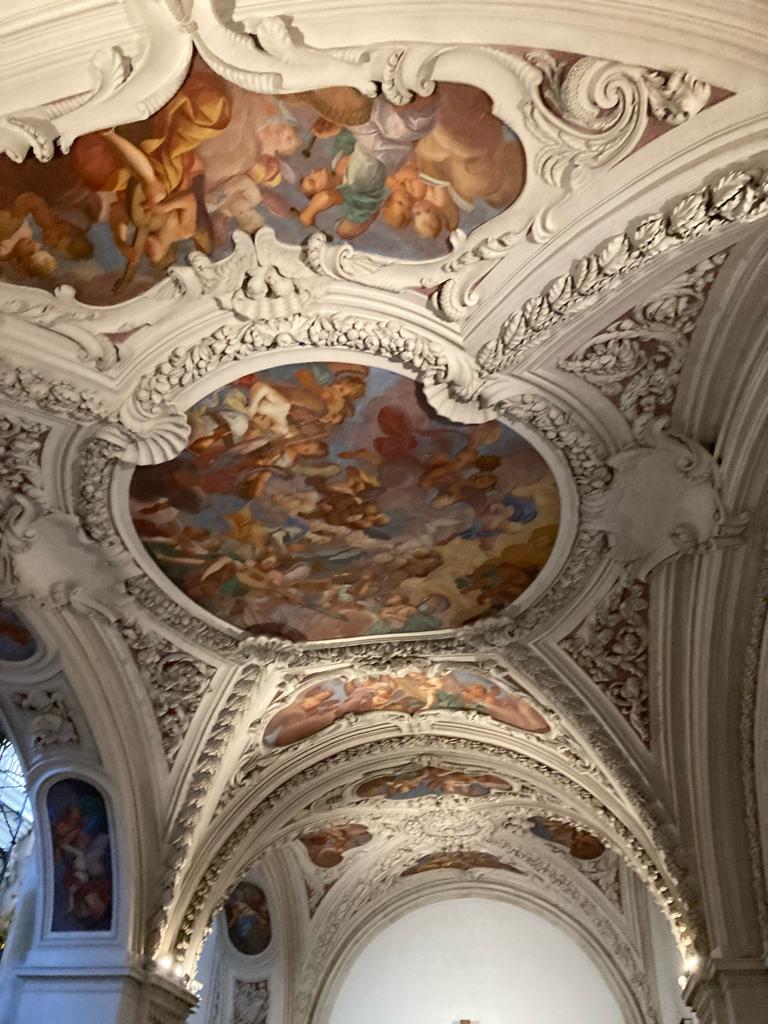
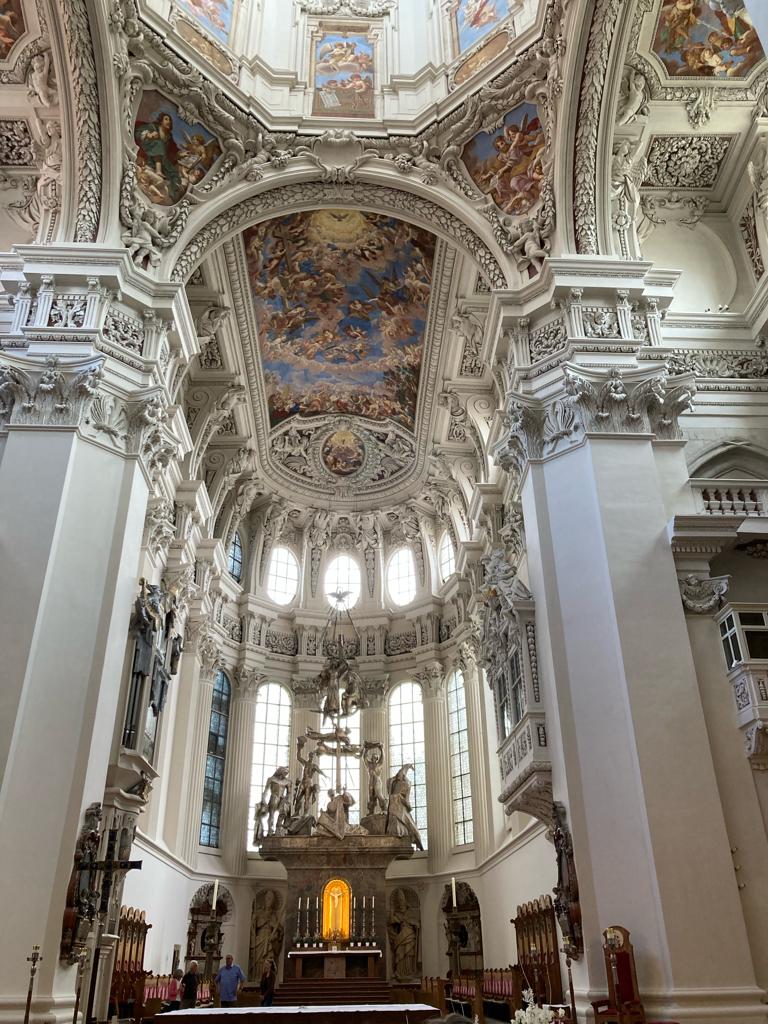
In the pivotal year of 1668, a momentous event transpired that would forever alter the course of the cathedral’s history. It was in this fateful year that the foundation stone, a symbolic cornerstone of progress and transformation, was ceremoniously laid. This act marked a turning point in the cathedral’s architectural journey, signifying the onset of an audacious venture that would redefine its very essence. Guiding this ambitious endeavor was the skilled hand and discerning vision of Carlo Lurago, a luminary in the realm of Baroque architecture. Under Lurago’s expert guidance, the cathedral underwent a metamorphosis of monumental proportions. The Baroque transformation was a labor of devotion, where every arch, column, and embellishment was imbued with a profound sense of purpose and artistic expression. Lurago’s mastery manifested in the resplendent fusion of opulence and spiritual significance that now defines the cathedral’s aesthetic. The ensuing centuries bear witness to the cathedral’s evolution, as its architecture reflects the amalgamation of diverse epochs and design philosophies. Each stone, each archway, carries within it the imprints of countless hands, the echoes of prayers, and the whispers of time. St. Stephen’s Cathedral, thus, stands not only as a magnificent architectural achievement but also as a living chronicle of Passau’s spiritual and cultural history. It embodies the resilience of faith, the tenacity of human endeavor, and the enduring power of architectural artistry to transcend generations. As visitors stand before the cathedral’s imposing façade, they are met not only with a visual spectacle but with a tangible connection to centuries of devotion, creativity, and spiritual contemplation. St. Stephen’s Cathedral, with its Romanesque foundation, Baroque transformation, and the echoes of countless pilgrims, remains a testament to the unyielding spirit of both its creators and the faithful who have sought solace within its sacred walls for generations untold.
Architectural Marvels: A Fusion of Styles
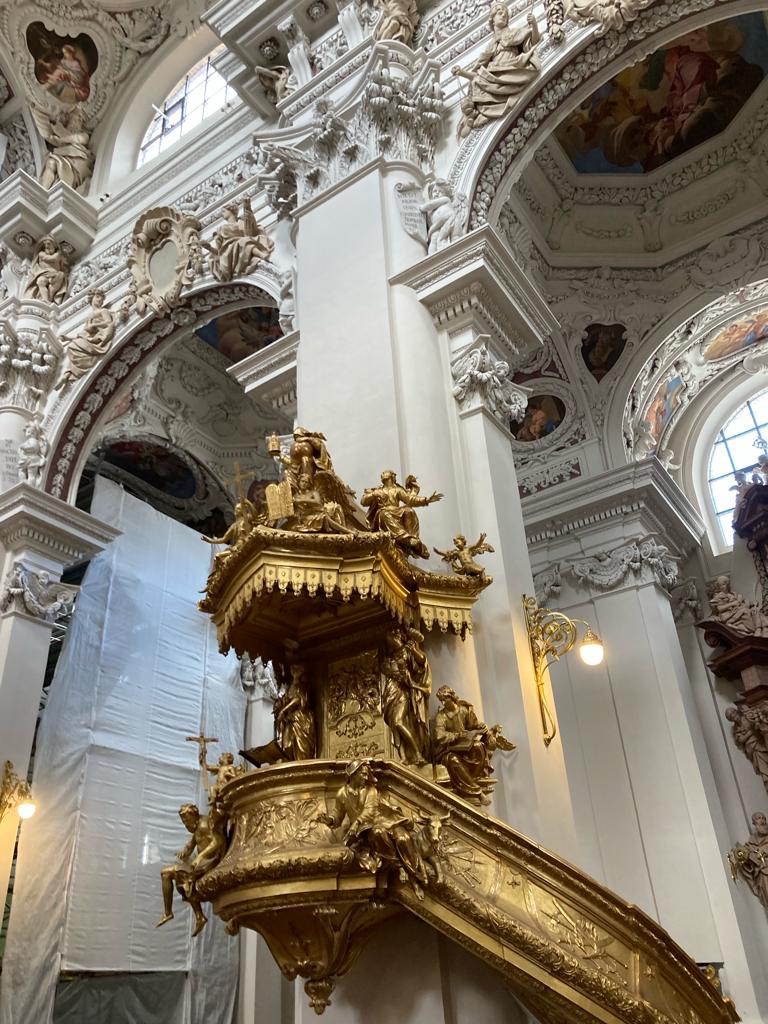
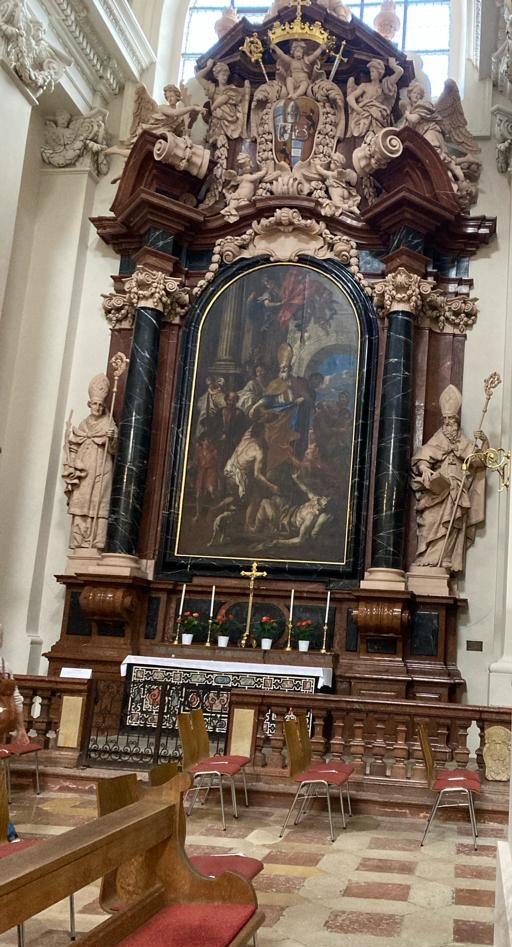
St. Stephen’s Cathedral is an extraordinary testament to the seamless fusion of diverse architectural styles, each layer contributing to its captivating visual narrative. The Romanesque influence is palpable in the cathedral’s stout and fortress-like presence, evoked through the use of robust pillars and gracefully rounded arches. These foundational elements, reminiscent of medieval strongholds, serve as a steadfast testament to the architectural norms of the era. As the centuries unfolded, so did the cathedral’s architectural identity. In the 14th century, during a phase of expansion, Gothic elements were seamlessly integrated into the existing structure. The result was nothing short of breathtaking. Towering spires pierced the sky, delicate tracery adorned the windows, and pointed arches lent an air of ethereal grace. This transition into the Gothic style added a layer of verticality and intricacy, ushering in an era of architectural transcendence.
Yet, perhaps the most resplendent chapter in the cathedral’s architectural saga was penned by the skilled hand of Carlo Lurago. His Baroque transformation stands as a crowning achievement in the cathedral’s storied history. The façade, adorned with opulent ornamentation and statues, radiates a celestial opulence that transports beholders to a realm of celestial splendor. It is as though the cathedral itself ascends to the heavens, a radiant beacon of human artistry and devotion. At the zenith of Lurago’s masterful intervention lies the St. Stephen’s cupola. This resplendent architectural marvel punctuates the Passau skyline, an awe-inspiring testament to the pinnacle of Baroque artistry. Its towering presence, crowned with intricate detailing, stands as a beacon of inspiration and a tribute to the boundless potential of human creativity.
Pinnacle of Sacred Art: Interior Splendors of St. Stephen’s Cathedral
Within the hallowed confines of St. Stephen’s Cathedral, an opulent tapestry of sacred art unfolds, weaving together centuries of devotion and artistic mastery. At the heart of this resplendent display stands the awe-inspiring high altar, a masterpiece meticulously crafted by the gifted sculptor Heinrich Schmidt. As one gazes upon its expanse, intricate detailing and allegorical representations come to life, each chiseled figure and ornate motif a testament to Schmidt’s consummate skill and spiritual reverence.
The interplay of light and shadow, a defining hallmark of Baroque design, imbues the cathedral’s interior with a transcendent quality. It dances across the intricate surfaces, illuminating the myriad statues, frescoes, and altars that grace the nave. This play of light, an ever-shifting tapestry of radiance, imparts an ethereal aura to the sacred space, inviting contemplation and reverence from all who enter.
A centerpiece of both engineering marvel and musical artistry, the cathedral’s celebrated organ commands the utmost respect and admiration. Crafted by the esteemed organ builder Anton Bruckner, this monumental instrument stands as the largest cathedral organ in the world. Its resounding chords, capable of reaching the farthest reaches of the nave, have reverberated through the ages. Each note, each crescendo, adds a sonorous dimension to the cathedral’s spiritual ambience, creating a symphony that resonates in the hearts of all who have the privilege to hear it.
The Whottelbash Fountain: A Fluid Ode to Artistry and Symbolism
The Whottelbash Fountain, a resplendent testament to Baroque artistry and symbolism, graces the vicinity adjacent to St. Stephen’s Cathedral in Passau, Germany. This exquisite fountain was meticulously crafted and erected in the early 17th century, marking a significant milestone in the city’s artistic and cultural landscape. The fountain’s construction was overseen by renowned sculptor and architect Hans Wottelbash, whose name is forever intertwined with this aquatic masterpiece. Wottelbash, a distinguished figure in the artistic circles of the time, infused his expertise and creative vision into every facet of the fountain’s design and execution.
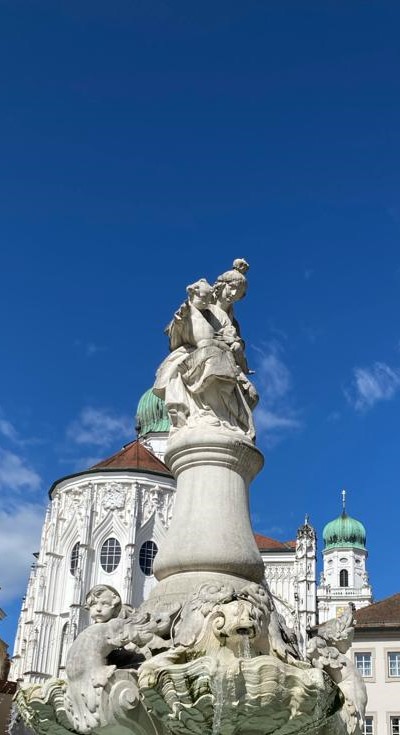
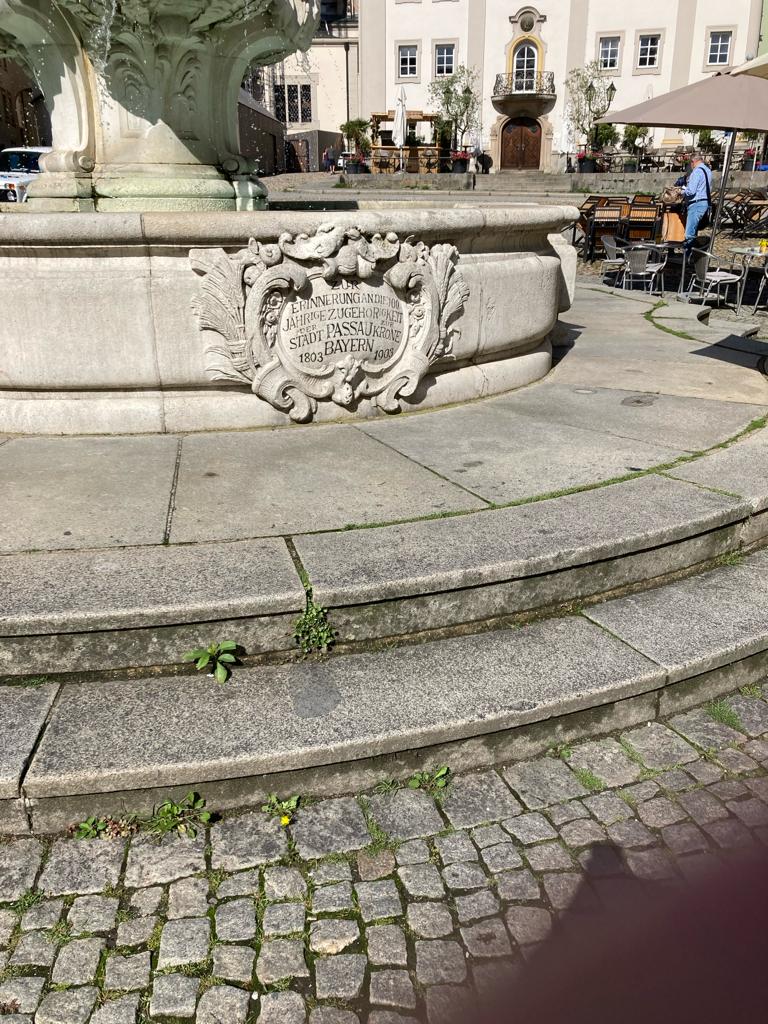
The essence of the Baroque era, characterized by its exuberance, opulence, and a penchant for grandeur, is palpably embodied in the Whottelbash Fountain. Its central figure, a graceful nymph, assumes a poised posture as she delicately cradles an amphora from which water gracefully cascades. This central motif captures the very essence of Baroque statuary – a harmonious fusion of elegance, dynamism, and a celebration of the human form. The surrounding figures, meticulously sculpted and strategically positioned, contribute to the fountain’s overall narrative. Cherubic figures and mythological creatures cavort playfully, imbuing the fountain with an air of whimsy and enchantment. Every intricacy, from the meticulously rendered drapery to the nuanced expressions on the figures’ faces, testifies to the painstaking craftsmanship and attention to detail that permeates the entire composition. Beyond its aesthetic splendor, the Whottelbash Fountain is replete with allegorical motifs that resonate deeply with the spirit of the Baroque era. Symbolism is woven intricately into the fabric of the fountain, with elements representing themes of abundance, fertility, and the rejuvenating power of water. This symbolism was not merely ornamental, but served as a visual language through which broader cultural and spiritual narratives were conveyed to the discerning observer.
St. Stephen’s Cathedral in Passau, Germany, stands not merely as an architectural marvel, but as a living testament to the intertwining narratives of history, faith, and artistic brilliance. Its multi-faceted evolution, from Romanesque simplicity to Gothic grace and Baroque opulence, mirrors the passage of epochs and the enduring human quest for transcendence. As sunlight filters through its stained glass windows and the notes of its monumental organ reverberate, the cathedral imparts a profound sense of awe, inviting visitors to partake in a journey through time and the boundless realms of human creativity. St. Stephen’s Cathedral, in its resplendent entirety, is a sanctuary not only of stone and mortar but of the human spirit, an immortal embodiment of our ceaseless quest for the divine.






